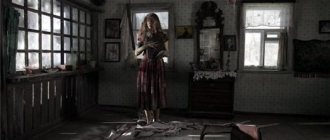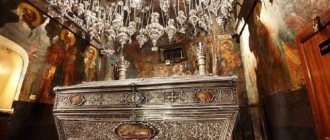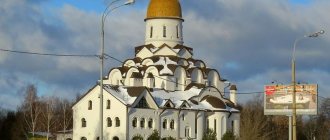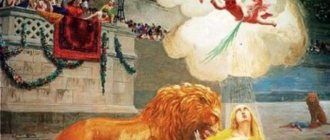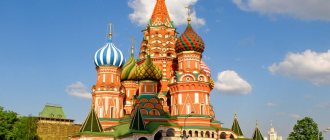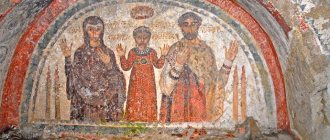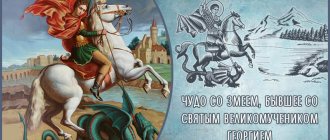Tens of thousands of Orthodox believers and curious tourists flock to the Christian capital of the world every year on Holy Saturday. They walk, travel by bus, fly on charters in order to personally be present in the Church of the Holy Sepulcher at the descent of the Holy Fire. And in the first moments after his appearance, wash yourself with the miracle-working Jerusalem flame.
An ancient phenomenon that has existed for two millennia. The descent of the Holy Fire takes place in front of millions, but at the same time it still keeps the secret of its appearance - what is it: a miracle or a symbol of faith?
What is the Holy Fire
Translated from Greek it means Holy Light. That's what they call it in Jerusalem.
On Holy Saturday, the Greek patriarch and the Armenian archimandrite behind the closed doors of the Edicule (Royal Tomb) mysteriously receive the Jerusalem Fire from the Lord. And then all those present light all the candles and lamps from it in the temple and outside it.
Origin of the expression and interpretation
Judging by written sources, the first witness to the appearance of Fire was the Apostle Peter. Having learned about the resurrection of Christ, he hurried to the tomb and discovered that the body of Jesus was not there. And the cave itself is illuminated with a miraculous radiance. This was the time when the Fire descended for the first time.
Since then, the Easter fire has become a symbol of the True Light. His birth symbolizes the Resurrection and immortality of the Son of God.
Historical reference
As early as the fifth century, the Jerusalem Church began its services on Holy Saturday only after the Evening Light had appeared.
Since IX, written evidence in history indicates that the miracle of the descent occurs after saying the prayer “Lord have mercy.”
“The lamps located above the Tomb were lit by an angel without outside help,” we read in the writings of the pilgrim Bernard Monk (867).
There is a lot of similar evidence left in sources over the past centuries: in the chronicles one can trace the annual ignition of Fire over many centuries.
And in the modern world, every year on Holy Saturday the entire Orthodox world, praying, awaits this miracle.
Church of the Holy Sepulcher
It is believed that it stands on the spot where Jesus Christ was crucified and resurrected.
Despite its worldwide fame and its significance in the history of Christianity, it surprises with its miniature size. Under one roof it contains Golgotha (the site of the crucifixion of Christ), and Edicule (a small marble chapel over the cave of the Sepulcher of Jesus), and the cathedral church of Kaphoklion. As well as chapels (small churches) of six churches - Catholic, Armenian, Coptic, Ethiopian, Syrian and Orthodox.
Once outside the temple gates, pilgrims follow the final path of Christ’s ascension to Golgotha.
The church service before the sacrament of the descent of Fire also reproduces the events of Holy Saturday - the passion of Christ, the crucifixion and resurrection:
- At the entrance to the church, a narrow flight of stairs 4.5 meters long leads to the place that was the last on the way to Calvary.
- At the top is the chapel where Roman soldiers stripped the Savior, preparing him for crucifixion.
- Further on, the silver disk is the place where God was nailed to the cross.
- The Stone of Anointing is located at the foot of Calvary, on which the body of Jesus was wrapped in swaddling clothes and incense by His disciples and prepared for burial.
- And the Holy Tomb is the burial place of Christ.
Performing the ritual
The ceremony is performed by the Orthodox Patriarch. The bishop of the Armenian Apostolic Church also takes part, the only one who accompanies the Patriarch to Edicule, as well as representatives of the Coptic and Syrian churches; representatives of the Ethiopian Church do not participate.
At its core, the rite is a divine service of the Orthodox Church, therefore representatives of other faiths first obtain permission from the Orthodox Patriarch to participate, going to the Orthodox altar to express their respect.
Holy Fire Ceremony
The main cathedral of Israel is small and cannot accommodate everyone who wants to see the miracle of the descent. Therefore, pilgrims and believers gather long before the ceremony begins. And latecomers flood both the square in front of the church building and the narrow streets leading to its walls.
Festive services begin on the morning of Holy Saturday. Moreover, they take place in accordance with a strict ritual.
Entrance of the Armenian delegation
At a quarter past nine the doors open and a procession of the Armenian Jerusalem Patriarchate enters the sanctuary.
After prayers at the sacred places, she makes a circuit around the Edicule and moves to the Armenian Chapel of the Church of the Resurrection.
Preparation of the Holy Sepulcher
Meanwhile, preparations are underway for sealing the Edicule. Cotton balls are laid out on the floor in the Tsar's Bedchamber. When the Holy Fire descends in a blue dew of lights onto the walls and floor of the chapel, the high priest will light one of the cotton balls from them and illuminate the lamp.
In the meantime, not a single candle should be lit here: all this is carefully checked by the police and non-believers.
Exactly at 11.00, representatives of different faiths seal the chapel with ribbons and wax seals.
Troublemaker
After another half hour, the solemn atmosphere of the cathedral is disturbed by the shouts and fun of the Arabs. Young people, loudly clapping their hands and sitting on each other's shoulders, shout out a prayer in which they ask to grant a Christian miracle to the Orthodox.
This is the tradition, and no one argues with it now. However, at the beginning of the 20th century, the English governor tried to ban “savage” dances. The Arabs were not allowed into the Temple - and Grace did not descend. The Patriarch of Jerusalem, having stood on his knees in vain for two hours, ordered the youth to be allowed in. After which the sacrament was completed.
This video shows the entry ceremony for Arab youth.
Arrival of the Chief Mediator
At noon the Greek Patriarch enters the church.
At 12.30 the Greek delegation circles the Edicule three times. And then, in front of the police and numerous pilgrims, the Patriarch is unmasked and remains only in a white vestment, stole, belt and armbands.
Dragoman removes the seals and cords from the door of the Holy Sepulcher and lets the Head of the Jerusalem Church inside. The meaning of the action is that he should not bring any matches or a lighter with him to the Tomb - nothing that would help him light the flame himself. Following him, the Armenian bishop rushes into the marble chapel.
Original in English
Introduction
The Holy Fire, the supreme ceremony of the Eastern Churches, takes place at midday on Easter Eve, according to the calendar of Eastern Christendom, in the Church of the Holy Sepulchre. Its origin is uncertain, but that it is derived from the ritual and symbolism in usage by the very early Church is undoubted: the ceremony is first mentioned by Bernard the Wise, writing in the middle of the ninth century, and may have originated when during the time of Charlemagne pilgrimages to the Holy Places were much encouraged and had become very popular.
In essence, the ceremony symbolizes the triumph of the Christian Faith, renewed year by year in commemoration of the first Victory after Calvary. The Patriarch enters the Edicule over the Tomb, in which for this one occasion all lamps are extinguished, and the “Miracle” of the descent of the Fire occurs. The Fire is then distributed to the crowd that throngs the Church, and is carried away far and wide. Before the War, the Fire was borne by devoted hands to the furthest corners of Russia.
The Turkish Government fearing that the fanaticism and excitement of these Easter crowds might result in an outbreak, were accustomed to station a large body of troops in and around the Church.
Conduct of the Ceremony
The ceremony is conducted by the Orthodox Patriarch. There also participate a Bishop of the Armenian Patriarchate, who alone accompanies the Patriarch into the Edicule, and representatives of the Coptic and Jacobite rites, but not of the Abyssinian, take part as well.
The ceremony is, however, essentially the service of the Orthodox Church, and the representatives of the other rites previously obtaining permission from the Orthodox Patriarch to take part, by proceeding to the Orthodox Altar and doing obeisance.
Participants in the Ceremony
Apart from the Patriarch and the Armenian Bishop, the following olorg and laymen take actual part in the service at periods: — A Bishop, Archimandrite, Dragoman, and <…> of both Orthodox and Armenian rites, a lay represent each of these rites , and one Coptic and one Jacobite <…> sentative, either a cleric or a layman. The Copt is frequently — layman who has purchased the privilege of receiving the Holy Fire.
The Moslem Guardian of the Holy Sepulchre exercises his traditional privilege of sealing the door of the Tomb previous to the entry of the Patriarch, and a Franciscan monk is present throughout the ceremony.
Allocation of Space on the Floor of the Rotunda
At this ceremony the Church becomes entirely filled with a seeing excited congregation, and each rite must be confined to its allotted floor space, within which the area may be further divided by towns.
The Orthodox Area is on the side of the Tomb furthest from the entrance, from the front of the Tomb to the middle of the seventh pillar.
The Jacobite Area is from then to a black cross on the right side of column 9, at a distance of about three feet from the center. This boundary is generally the matter of dispute, the Jacobites claiming the boundary should be the center of the column. The question has, however, been definitely decided as above.
These two boundary lines converge on the north-west corner of the Edicule.
The Coptic Area extends from the Jacobite boundary to the center of column 12, on a line drawn to the south-west outside corner of the Edicule.
The Armenian Area completes the circuit to the front of the Tomb, but the spaces in front of the doors between columns 12–15 are Orthodox.
It must be remembered that the days and nights previous to the day of the ceremony the church becomes filled with pilgrims and others, especially Copts, with bedding, etc., who must on the day of the ceremony be rigorously confined within the limits of them respective areas. Disputes are also likely to occur between the Jerusalem and Jaffa contingents in the Orthodox Area.
Accommodation for Visitors
The Orthodox Balcony on the north side of the entrance to the Orthodox Catholicon from the Rotunda is, by courtesy of the Patriarch, accustomed to be put at the disposal of the Government, and will hold ten people, but only five to six chairs.
The Armenian Patriarch is accustomed to put at the disposal of the Government two windows in the southern gallery, holding seven to eight each. Ladies are usually accommodated here, and there is space in each for three chairs. This is approached by a staircase near the Armenian Vestry on the left of the main entrance.
Other guests can be accommodated in the gallery overlooking the Orthodox Choir. Access is obtained through the Calvary Chapel, and there is ample room, if the view is rather interrupted; there is, however, no seating accommodation.
The Orthodox Patriarch also puts at the disposal of the Government, if possible, a small window in the upper range under the Rotunda. This holds six people standing, and is reached from the Orthodox Patriarchate.
The Balcony on the other side of the entrance to the Orthodox Choir from the Rotunda is at the disposal of the Greek Consul-General.
The spaces immediately below these balconies are reserved for guests of the Patriarchates, Orthodox on the north, and Armenian on the south, and should not be filled except with the consent of the Dragoman. Tiers of seats may not be constructed in these spaces, but benches may be placed for the convenience of those present.
Each visitor for whom accommodation is being found by the Deputy <…> missioner's Offices should be provided with a ticket showing the place allotted to <…> arrangements should be made for guides to direct ticket-holders. The tickets for <…> Gallery and window are supplied through the Deputy District Commissioner <…> the Dragoman of the Orthodox Patriarchate.
How does the Holy Fire appear?
The representative of the Armenian Church remains at the entrance, the Greek Patriarch goes to the center to the Lodge of the Savior. They kneel down and begin to say prayers. An appeal to the Almighty can last from five minutes to several hours.
Expectation
Meanwhile, believers continuously repeat “Lord, have mercy!”
According to the prediction, one day, due to human sins, the Divine Radiance will not happen. Then the Temple will collapse, and the end of the world will come on Earth. It is not known when this will happen. But every time for 2000 years, gathering for the pre-Easter service at the Church of the Holy Sepulcher, clergy and pilgrims perform the Sacrament of Communion.
Passage during the service of all stages following Christ, from the Crucifixion to the Resurrection; anticipation of a possible end and a new birth at the moment of the ignition of the Fire - all this creates a special atmosphere in the Temple. Some are crying, some are completely absorbed in themselves, some are praying furiously.
Convergence
Finally, lights flash in the church, a column of light appears above the Edicule - and inside, where the Greek Patriarch prays, the Holy Fire lights up.
The bell rings in the Temple. Those praying rejoice, hug and cry happily - the Holy Light has descended this time too, a year of happy life lies ahead.
Fire Exit
Having illuminated the Edicule, Fire goes out into the temple.
Everything happens in stages from year to year:
- First, the Greek Patriarch lights a lamp from it.
- Then - a bunch of candles (33 according to the age of Jesus Christ).
- The Armenian Archimandrite also brings candles to the lamp, and both representatives of the highest clergy transmit the Light to their flock.
- For the Greeks - the Patriarch through the north window, for the Armenians - the Archimandrite through the south.
- The fast walkers spread the Fire throughout the Temple.
- At this time, representatives of the Coptic and Syrian Orthodox Churches enter the Edicule, where they also light their candles.
- The first to leave the Edicule is the Greek Patriarch, tired and exhausted by all-consuming prayer, followed by the Archimandrite, whom the believers carry in their arms to the Armenian Chapel of the church.
Wonderful properties
In the first minutes after its descent, the flame of the Jerusalem fire does not burn, and hundreds of pilgrims, performing a centuries-old ritual, wash themselves with it. Believers cite numerous cases of healing of the sick that occurred directly during the fiery ablution.
The temperature anomaly was recorded by the head of the association of Orthodox scientists, Archpriest Gennady Zaridze, who measured it using a pyrometer. In the first minutes of combustion, the device showed only 40 degrees. After 15 minutes, the flame temperature increased to 320 degrees.
How to bring it home
After the end of the ceremony, having lit their lamps, the believers leave the church. Someone goes to his house, located in the vicinity of the temple. And someone will go to a distant country, where representatives of the highest clergy and compatriots await his return with the Holy Light. All fire lit from the main source is now considered Divine.
Parishioners greet the Jerusalem fire in their homeland with trepidation and respect:
- in Russia;
- Belarus;
- Greece;
- Georgia;
- Egypt;
- in Romania;
- Moldova;
- in Lebanon;
- Poland;
- Bulgaria;
- Syria;
- In Cyprus;
- in Ukraine.
Those greeting you will also light their lamps right at the airport or in churches and take them home. This is how the Jerusalem miracle spreads on Easter to the farthest corners of the Earth.
How long should the Fire burn? In temples the Light is kept until next year, until the convergence occurs again on Holy Saturday. Believers bring it to their homes in order to prayerfully cleanse the home of illnesses and evil spirits, and try not to extinguish it throughout the entire Easter week.
When the Light did not appear
There have been cases in history of non-convergence of Fire.
Expulsion of Orthodox Christians from the Church of the Holy Sepulcher
The first time this happened was in 1101. Then, as a result of the split of the Roman and Byzantine churches, Catholics recognized Orthodox Christians as heretics and expelled them from the Church of the Holy Sepulchre.
And on Holy Saturday the holy fire did not descend until the Orthodox were called to participate in the ritual.
An attempt to replace the Patriarch of Jerusalem with an Armenian one
The second time this happened was in 1579. The Armenian priests agreed with the newly appointed mayor that the sacrament would be performed by a representative of the Armenian Church, and not by the Orthodox Patriarch.
The entire Armenian flock came to Jerusalem. And on Holy Saturday 1579, Orthodox Patriarch Sophrony IV was not allowed into the cathedral. He stood and prayed in front of the closed doors of the Temple. But no matter how much the Armenian clergy prayed, the miracle never happened.
Suddenly a roar was heard - a column at the church gate cracked, a flame came out of it and lit a bunch of candles in the hands of the Patriarch of Jerusalem. The crack and the column scorched by the Fire can still be seen to the left of the entrance to the sanctuary. Pilgrims leave notes in it with prayers to the Lord.
That year, the Turkish authorities issued a verdict: from now on, the representative of the Armenian Church will only accompany the Orthodox priest, and will not be able to receive the Light himself.
Participants of the ceremony
In addition to the Patriarch and bishop of the Armenian Church, the following clergy and laity periodically participate in divine services: bishop, archimandrite, dragoman and […] of the Orthodox and Armenian churches, a layman from each of these churches and one representative of the priesthood or laity from the Coptic and Syrian churches. The representative of the Coptic Church is often a layman who has acquired the privilege of receiving the Holy Fire.
The keeper of the keys to the Church of the Resurrection of Christ, a Muslim, traditionally seals the doors of the Edicule before the Patriarch enters; a Franciscan monk is also present during the entire ceremony.
The Mystery of the Miracle of the Holy Fire
The miracle of convergence causes endless controversy. The Orthodox are sure: Fire appears from heaven from year to year.
Skeptics believe that all this is one big fiction that exists to support the creed. In their opinion, the patriarch takes the fire for lighting either from the lamp standing behind the marble icon. Or a fire occurs as a result of a chemical reaction of substances prepared in advance. Moreover, several options for possible interactions are given. They also allow the influence of an electric discharge, which is also in no way connected with Divine origin.
As for the temperature of the first minutes of combustion, skeptics have an explanation for this: many esters of organic and inorganic acids have a cold fire. You can safely hold your hand in the flame of ether, since it not only does not burn, but also does not heat. So artificially created fire will have exactly these properties.
True, there is one “but” here: in the first minutes, not only the lamp, but also all the candles lit from it, burn with a cold flame. And they have nothing to do with the broadcast.
Representative of the Armenian Patriarchate Samuil Agoyan, who was present three times in the edicule during the lighting of the Fire, stated that he “saw the patriarch lighting candles from an oil lamp.” “God works miracles, but not for the amusement of people,” he said. And yet the sacrament of descent is available only to the head of the Greek church, he alone is at the Bed of Christ.
The Catholic Church does not recognize the divine nature of fire either. However, before the expulsion of the Crusaders from Jerusalem in 1187, she took part in the pre-Easter ceremony. In 1283, Pope Gregory IX spoke out against seeing the rite of descent as a miracle.
Allocation of space in the Rotunda
During the Descent of the Holy Fire, the Temple is completely filled with many excited believers, and representatives of different faiths must be in the places designated for them, which in turn can be divided between representatives of different cities.
The Orthodox Church owns part of the square on the side of the Sepulcher farthest from the entrance, from the front of the Sepulcher to the middle of the seventh column
From here to the black cross to the right of the ninth column, at a distance of about a meter from the center - the part belonging to the Syrian Church. This border is generally a point of contention, as the Syrians believe it should run down the center of the column. But this issue, however, was not resolved in their favor, and the border remained unchanged.
These two boundaries converge at the northwestern corner of Edicule.
The Coptic territory extends from the border of the Syrian Church to the center of column 12, along a line drawn to the southwestern outer corner of the Edicule.
Armenian territory completes the circle to the front of the Sepulcher, but the place in front of the doors between columns 12 and 15 belongs to the Orthodox Church.
It should be remembered that pilgrims, especially Copts, arrive at the temple several days before the Descent of the Holy Fire and spend the night there. On the day of the ceremony itself, they must strictly observe the boundaries of their faiths. Disputes also often occur on the territory of the Orthodox Church between believers from Jerusalem and Jaffa.
Scientific explanation
How is everything really going? Scientists are trying to understand the essence of the phenomenon.
They state that fire occurs in natural conditions in three cases:
- release of magma masses;
- electric discharge;
- self-ignition of gas.
Physicists are interested in the phenomenon itself: if it exists, how it originates and how it manifests itself.
In 2008, Andrei Volkov, Candidate of Physical and Mathematical Sciences, measured electromagnetic oscillations using instruments for 6 hours. He detected three obvious bursts in the electromagnetic spectrum of radiation. The radio pulse was recorded in the area of the Edicule at the moment when it was illuminated by Light. The scientist compared the force of vibrations with the piezoelectric effect and concluded that it is impossible to create them artificially. True, he did not rule out that resonance could arise during the performance of the chant that sounded in the Temple.
No other instrumental studies of the phenomenon have yet been carried out.
Candidate of Physical and Mathematical Sciences Andrey Volkov talks about the phenomenon in the following video.
Alternative opinions and doubts
The question of where the unusual flame comes from worries the minds of many historians, scientists and skeptics.
Scientific explanation
The Church of the Holy Sepulcher very zealously protects its shrine, not allowing outsiders to enter the Edicule. However, in 2008, Russian physicist Andrei Volkov managed to obtain permission to conduct his research. On the eve of Great Easter, when the Holy Fire was supposed to descend, he installed ultra-sensitive equipment and began to wait.
Just before the blue-blue lights appeared on the tombstone, the sensors recorded a spontaneous long-wave impulse of electrical origin. When the cotton ball was set on fire, the number of such bursts increased, and the data obtained revealed that their power was comparable to a small welding machine.
When they conducted a scientific study of a cracked column standing near the entrance to the crypt, they received unexpected confirmation of the hypothesis. The destruction to which the stone was subjected was the result of a strong electrical discharge.
Cracked column near the entrance to the crypt
Skeptics' opinions
The explanations of skeptical people do not have an evidence base, but they should not be completely written off either. Thus, the representative of the Armenian Apostolic Church Samuel Agoyan claims that the Divine flame is lit from a lamp filled with oil. His opinion is confirmed by the Jerusalem Metropolitan Cornelius, who calls the Holy Fire a natural phenomenon, sanctified by holy prayer.
Orientalist I. Yu. Krachkovsky cites the testimony of one parishioner. He said that he himself saw how the priest secretly lights his candle from a lamp hidden in a distant niche of the Edicule.
Another version supported by skeptics is spontaneous combustion. The miraculous flame, in their opinion, appears as a result of a chemical reaction of certain substances with air. This can be balsam oil, olive oil or potassium chromate.
The fire that appears from the combination of boric and sulfuric acids with ethyl alcohol does not really burn for the first few minutes.
Author's advice
Representatives of the Greek Orthodox churches
The Orthodox Church calls the descent of the Holy Flame a “miracle,” explaining the divine nature of the phenomenon. However, not all representatives of Orthodoxy adhere to this version. For example, the Metropolitan of Bethlehem claims that there is nothing inexplicable here. The Church simply cannot deprive believers of another miracle, and therefore continues to play the show with the sudden appearance of the Holy Fire. This opinion is also confirmed by the time of his condescension - every year it coincides completely by chance with the flight on which the Divine Light is sent to Moscow.
The Orthodox Church calls the descent of the Holy Flame a miracle
Islamic sources
The chief Muslim judge Mujir ad-Din describes the nature of the “miracle” most clearly. Kadiy speaks of the destruction of the Church of the Holy Sepulcher. According to him, the crypt was razed to the ground, removing all the valuables from there. The reason for this action was repeated reports of cunning Christians who dishonestly obtained fire, presenting it as a miracle to the ignorant. However, it is obtained in a completely natural way. Silk threads stretched over the ceiling of the temple are coated with balsam oil mixed with sulfur. Moreover, everything is arranged in such a way that it is impossible to see the catch with the naked eye.
Symbolism
Of course, the action is imbued with deep symbolism.
And it is quite possible that behind the ritual there are only the words of the scriptures preserved for centuries and the faith of the clergy and parishioners. All this can be attributed to traditional church rituals:
- 40 days of fasting and communion before the ceremony.
- Saturday service, which from the first to the last moment depicts the passions of the Crucifixion, Burial and Resurrection of Christ.
- The removal of the “True Light” from the Tomb means the beginning of a new conscious life.
The theologian Protodeacon Andrei Kuraev, answering the question of whether the emergence of the Divine Fire is true or fiction, said: “There is a miracle of Epiphany water. But no one says that water itself condenses on the walls of an empty tank. There is a miracle of liturgy. But it is we, not the angels, who bring bread and wine for her. The consecration of water, grain, bread is the consecration of what people brought. Also the consecration of candles and fire."
Thus, he did not confirm the descent of the fire, but explained that the essence of faith is much deeper than any symbols.
